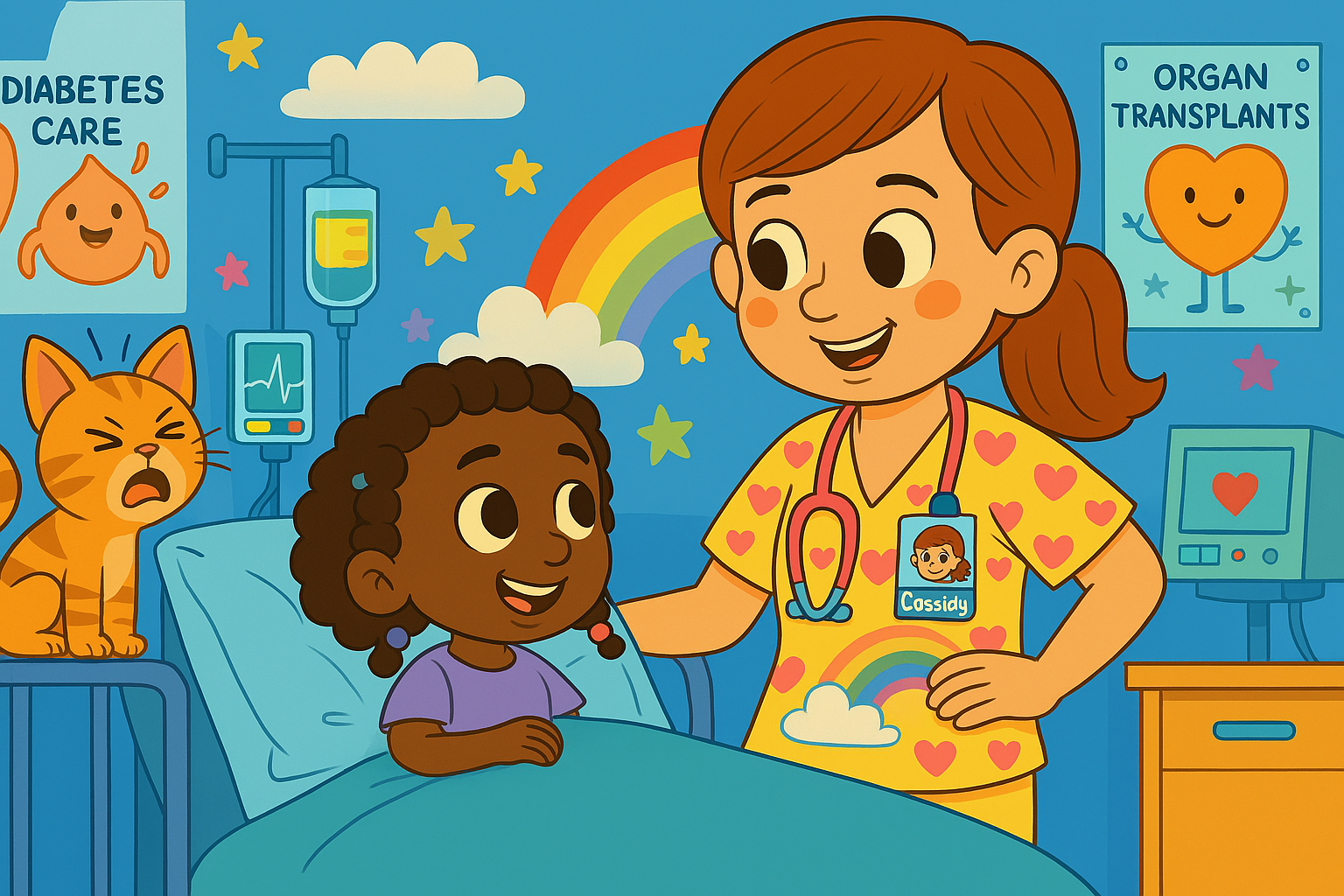Dexcom Real-Time Status Page
Dexcom launches an always-on, real-time status page!
There is now a webpage where customers, healthcare providers and loved ones can check the status of all Dexcom systems 24 hours a day, 7 days a week. This page is the first of several updates that Dexcom is putting in place. Spoilers: Look for the launch of an in-app messaging feature that is planned for the near future.
What are you waiting for, go check it out!
click> status.dexcom.com
Second Hearing: Rising Cost of Insulin
Date: Wednesday, April 10, 2019 - 10:30am
Location: 2322 Rayburn House Office Building
Subcommittees: Oversight and Investigations (116th Congress)
The Oversight and Investigations Subcommittee will hold a hearing on Wednesday, April 10, at 10:30 am in 2322 of the Rayburn House Office Building. The hearing is entitled, “Priced Out of a Lifesaving Drug: Getting Answers on the Rising Cost of Insulin.” This will be the second hearing on the rising cost of insulin.

First Hearing: Insulin Costs
Date: Tuesday, April 2, 2019 - 10:30am
Location: 2322 Rayburn House Office Building
Subcommittees: Oversight and Investigations (116th Congress)
The Subcommittee on Oversight and Investigations of the Committee on Energy and Commerce will hold a hearing on Tuesday, April 2, 2019, at 10:30 a.m. in room 2322 of the Rayburn House Office Building. The hearing is entitled, “Priced Out of a Lifesaving Drug: The Human Impact of Rising Insulin Costs.”
Dexcom Adds “Hey Siri, what’s my glucose?" and MORE!
DEXCOM G6 MOBILE APP version 1.4.0 released!
NEW IN THE DEXCOM G6 MOBILE APP:
“Hey Siri, what’s my glucose?”* – iOS device users will now be able to ask Siri to read Dexcom glucose readings aloud and display graphs directly on the lock screen, eliminating the process of unlocking the phone and manually opening the Dexcom app; the launch of virtual assistant integration is a first-of-its-kind innovation in CGM
More followers** – Expanded Share function, allowing users to share glucose readings directly with up to ten people, versus five in the previous version; this update is critical for pediatric patients and others who rely heavily on their family and diabetes support network to help manage their disease
24-hour sensor expiration reminders – Automatically receive a 24-hour reminder before it’s time to replace a sensor, in addition to 2-hour and 6-hour reminders
CLARITY app right at your fingertips – Launch the Dexcom CLARITY app directly from the Dexcom G6 app for more retrospective glucose reports. If a customer does not yet have CLARITY, they will be taken to the App Store to download and install the app
Submit technical support inquiries – Submit technical inquiries through a browser launched through the app, versus the auto-populated email in the previous version
Apple Watch Series 4 face complication – iOS device users are offered a new Graphic Circular complication specifically for the Apple Watch Series 41
Integration with Google Fit – Android device users will have a new integration with Google Fit to display Dexcom CGM data on a 3-hour delay
Dexcom users can download the app update today from the iOS App Store and it will be available for download soon on Google Play. For more information on Dexcom G6®, please visit my link.
For complete device compatibility chart visit dexcom.com/compatibility
[1] Smart phone required to display readings on watch
[1] If your glucose alerts and readings from the G6 do not match symptoms or expectations, use a blood glucose meter to make diabetes treatment decisions.
** Separate Follow app required
*Compatible with iOS 12
Kris Freeman's Triathlon with Dexcom and Omnipod
Hello everyone! This is a guest post (sorta) from former Olympic Cross Country skier Kris Freeman. Actually, this wasn't written for Arden's Day - it's from Kris's Facebook page and I am posting it here with his permission. We talk on the Juicebox Podcast all of the time about how I use Arden's Dexcom data to make small adjustments to her insulin with settings that are available on her Omnipod. When I saw Kris's post I thought, "this is the next level of those ideas" and I wanted to share his process with you. Please visit Kris on FB or his blog, he's also been featured on Arden's Day a number of times and been a guest on the podcast twice. -- #BoldWithInsulin
Yesterday I competed in and won the Sea to Summit triathlon. The race traditionally starts with a 1.5 mile swim in the Salmon Falls river, continues with a 92 mile bike ride to the WildCat MT ski area parking lot, and finishes with a run up the Tuckerman Ravine trail to the Summit of MT Washington.
Unfortunately due to the heavy rains NH has had over the previous week, a lot of fecal matter has ended up in our waterways and the bacteria level in the river was above the safety limit. The swim was canceled and the event became a biathlon.
The swim would have taken approximately 40 minutes so I had to change my insulin dosing strategy to accommodate the slightly shorter race. My glycogen stores were topped off so I was running a 24/7 basal rate of 1.0 units per hour on my Omnipod. To cover race nerves, readily available glycogen stores and carb/calorie intake I settled on the following protocol.
Hour 1 = 1.0 units per hour
Hour 2 = .7 units per hour
Hour 3 = .3 units per hour
Hour 4 = .3 units per hour
Hour 5 = .3 units per hour
Hour 5-5.5 = .3 units per hour
Hour 5.5- to finish = off
It is very difficult to estimate how much insulin I will need in an event this long. I have to guess how insulin sensitive my body will become from prolonged exertion as well as how many calories I will need to fuel myself. The program that I used yesterday ended up being a little too aggressive and I had to force feed myself at the end of the race. On the bike I drank 60 ounces of Gatorade, 20 ounces of custom Cola/Coffee mix, and 24 ounces of RedBull. I had planned to take in solid food but I was sweating buckets and my stomach was not calling for it.
The bike took me four hours and ten minutes and my glucose was 116 at the transition to running. I drank another 16 ounces of Gatorade during the first 40 minutes of the hike. At this point my glucose was 117. I decided to pull off the Omnipod that was delivering .25 units per hour as I did not want to have to overfeed to get to the top of the mountain. I was wearing two pods and the other one was delivering the minimum dosage of .05 units per hour.
I ended up having to overfeed anyway. I drank another 16 ounces of Gatorade over the next 20 minutes but my sugar dropped to 80. I had to pull out my emergency flask filled with 5 Untapped Maple syrup gels. The flask contained 105 grams of sugar and I finished it five minutes before winning the race in five hours and forty-four minutes.
Every race is a learning experience. If I could do this race over I would reduce the first hour dosage to .7 units, the second hour to .5 and then I would have run .3 up until 4 hours at which point I would have suspended delivery. The attached picture is a graph of my glucose on a Dexcom during the race. It looks "perfect" but I really would have preferred to not take on over 100 carbs in the last 30 minutes of the race.






















